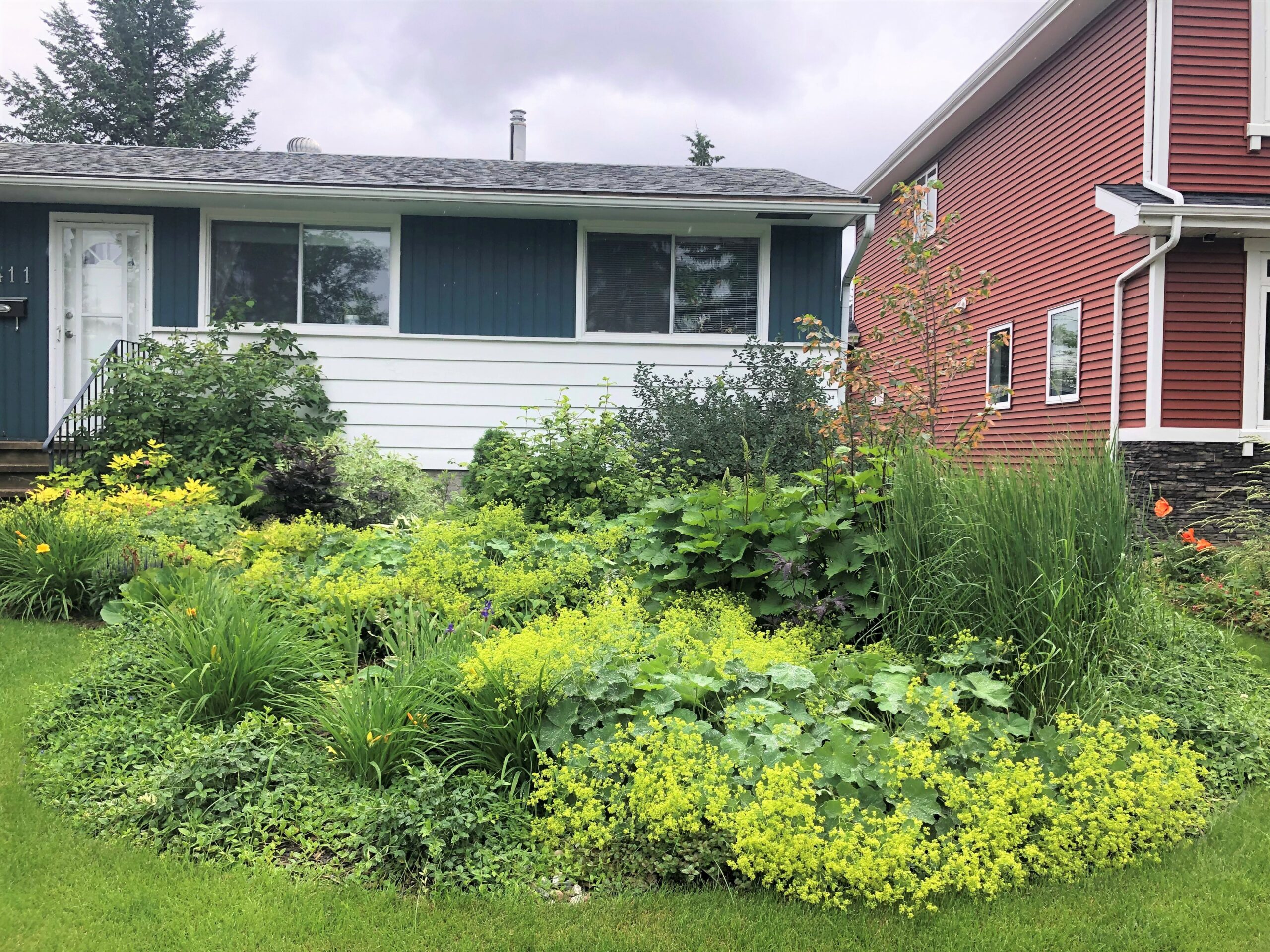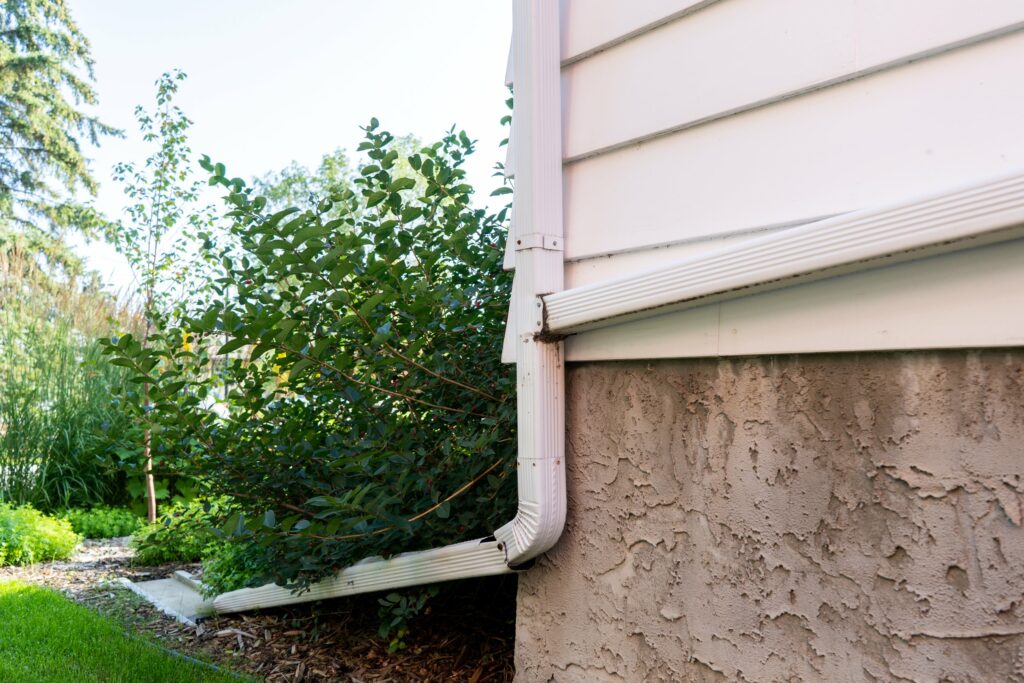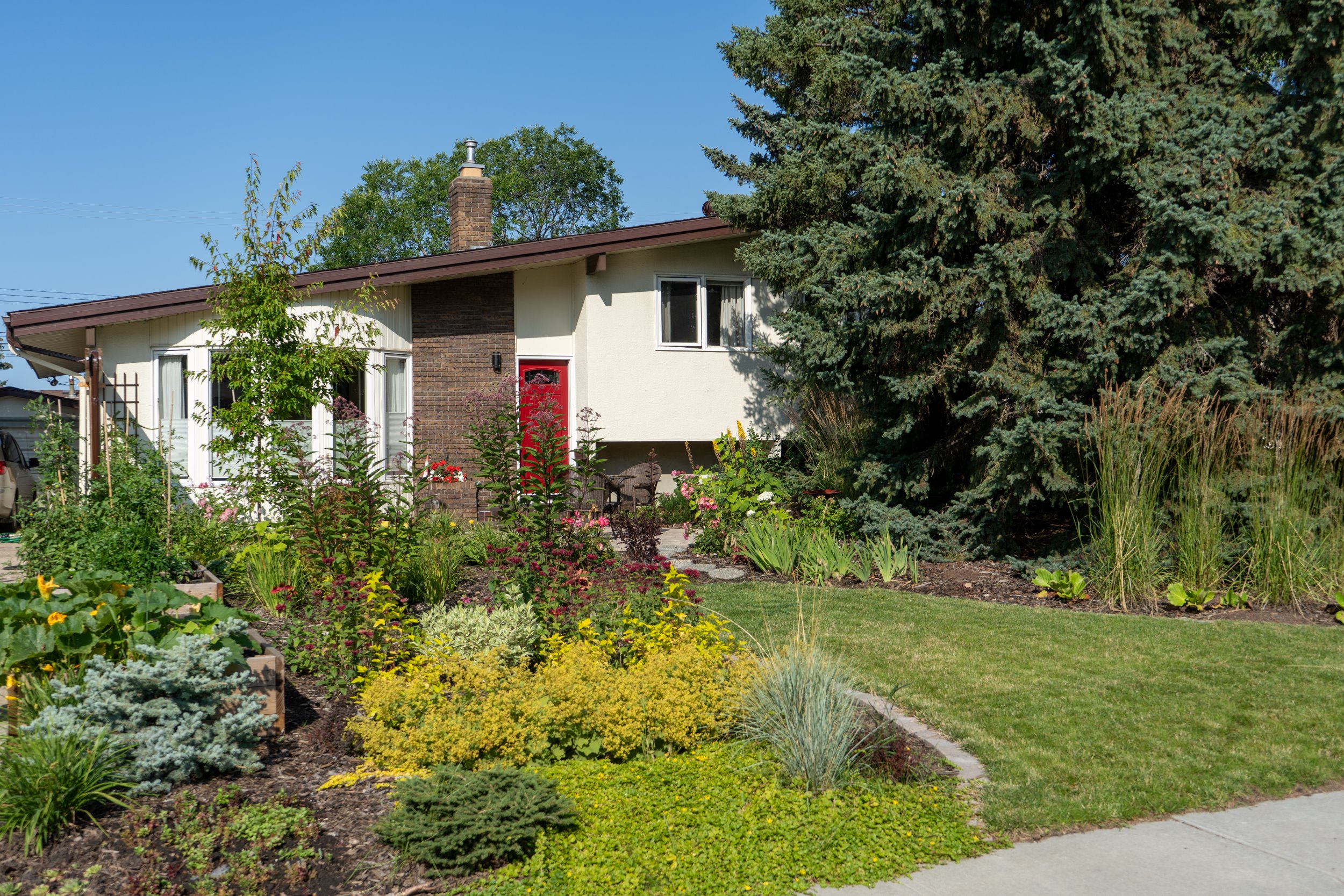Project Description


Mouse on and off the image above to shift between BEFORE and AFTER images
THE CONTEXT
The Langfords are a young couple with an interest in gardening who purchased a bungalow in an older community in Edmonton. They set their sights on adding a rain garden in their front yard after having installed raised beds for vegetables in their back yard.
THE PROCESS
The home had mature foundation plantings from the previous homeowner, which the current owners rearranged as part of the rain garden construction process. Because the yard already had good soil depth (at least 30 cm), the sod was merely stripped and a depression was carved into the existing soil rather than replacing it. Even though clayey soil–the dominant soil on the prairies–is difficult to work and is usually amended with organic materials for garden beds, it provides great drainage. This is due to the properties of the soil itself and the way holes created by decayed roots and the work of earthworms and other tiny creatures open it up (bioturbation).
The sod was stripped and flipped and topdressed with new soil and was re-used in a mound behind the rain garden. The mound was planted to seamlessly blend the rearranged foundation planting into the rain garden.
THE PLANTS
A single, narrow Dakota Pinnacle Birch (Betula platyphylla ‘Fargo’) anchors the corner of the area where the downspout discharges. The rest of the plants are flowering perennials, with a cluster of Feather Reed Grass providing screening from the neighbour (Calamagrostis acutiflora ‘Karl Foerster’).
A short berm to the front and to the neighbour in the red house creates the quintessential rain garden basin shape, planted with a variety of short groundcovers such as Sweet Woodruff (Galium odoratum) and Periwinkle (Vinca minor).
The homeowners report that the rain garden drains rapidly, and that maintenance is easier than mowing the lawn, as the rain garden can be left for weeks without any care, instead of needing weekly attention. The garden has filled in beautifully.
THE QUIRK
The home has an unusual drainage setup where all the roof runoff from both the front and the back of the house is channeled through a single downspout—leaving only one practical spot for a rain garden.
NOTES
1 | The strip-and-flip sod was buried shallowly and has been troublesome. Grass at the edges of the pieces of sod was strong enough to punch through the soil, creating a maintenance challenge. The grass will eventually weaken with diligent pulling. If a strip-and-flip method is used, the sod should be buried at least 15 cm below the surface, and more if you can.
2 | Lady’s Mantle (Alchemia mollis) has filled in the space impressively, but it is somewhat dominant. Cutting the frothy top-growth before it sets seed will keep baby plants from forming and taking over.
3 | Birch leafminer has reached the birch tree. This is a typical pest of birches. The tree is weakened but should not die, and a balance between the undesirable sawfly and what feeds on it will stabilize in time. Some recommend tipping the balance with the addition of nematodes.
4 | This project is in the Mill Creek watershed which is heavily impacted by urban development. Retrofitting rain gardens is an excellent way to mitigate these impacts.
IF THEY DID IT AGAIN, the homeowners say they would…
“use groundcovers instead of mulch, because mulch floats and moves around too much.”
Planting Plan

















Leave A Comment